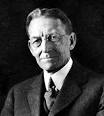| Date | Text | |
|---|---|---|
31 Mar 1945

Lewis Ralph Jones |
death Lewis Ralph Jones Died 31 Mar 1945 at age 80 (born 5 Dec 1864). U.S. botanist and agricultural biologist who was one of the first and most distinguished of American plant pathologists. Jones began his career at a time when his specialty, plant pathology, was emerging as an offshoot of mycology, plant therapeutics, and bacteriology. He was always on the research frontier of each new development, and he has been credited with initiating interest in the environmental aspects of plant pathology. He pioneered in the use of Bordeaux mixture in the US. He began what became a 20-year experimental program of spraying various mixtures on different varieties of potatoes. For the Department of Agriculture he searched in Europe for disease-resistant potatoes. He also carried out fundamental studies on the bacterial soft rot of carrots and other vegetables. Although his work tended to focus on the diseases of economically important plants, the results were also contributions to basic science. His studies made possible a much greater control of potato diseases and a resulting increase in yield. |
|
31 Mar 1945

Hans Fischer |
death Hans Fischer Died 31 Mar 1945 at age 63 (born 27 Jul 1881). German biochemist who was awarded the Nobel Prize for Chemistry in 1930 for research into the constitution of haemin, the red blood pigment, and chlorophyll, the green pigment in plants and especially for his synthesis of haemin (1929), non-protein part of haemoglobin that gives blood its red colour. He further showed that chlorophylls are porphyrins and that they share a similar structure with haemin, but with subtle differences. Following the destruction of his laboratory during WWII air raids, dispair led to suicide, just one month before Germany surrendered. |
|
31 Mar 1945

Harriet Ann Boyd Hawes |
death Harriet Ann Boyd Hawes Died 31 Mar 1945 at age 73 (born 11 Oct 1871). American archaeologist and social activist who gained renown for her discoveries of ancient remains in Crete. She went to Crete in 1900, and with the encouragement of Arthur Evans, began to excavate a Minoan site at Kavousi where she discovered some Iron Age Tombs. From 1901-05 she led a large team that excavated the early Bronze Age Minoan town of Gournia, becoming the first woman to head a major archaeological dig. As a community of humble artisans, Gournia was of particular interest to archaeologists, complementing as it did the more elaborate palaces being unearthed at Knossos and elsewhere. In 1908 she published her monumental work on Gournia. During WW I she went to Corfu to help nurse the Serbians (1916). |